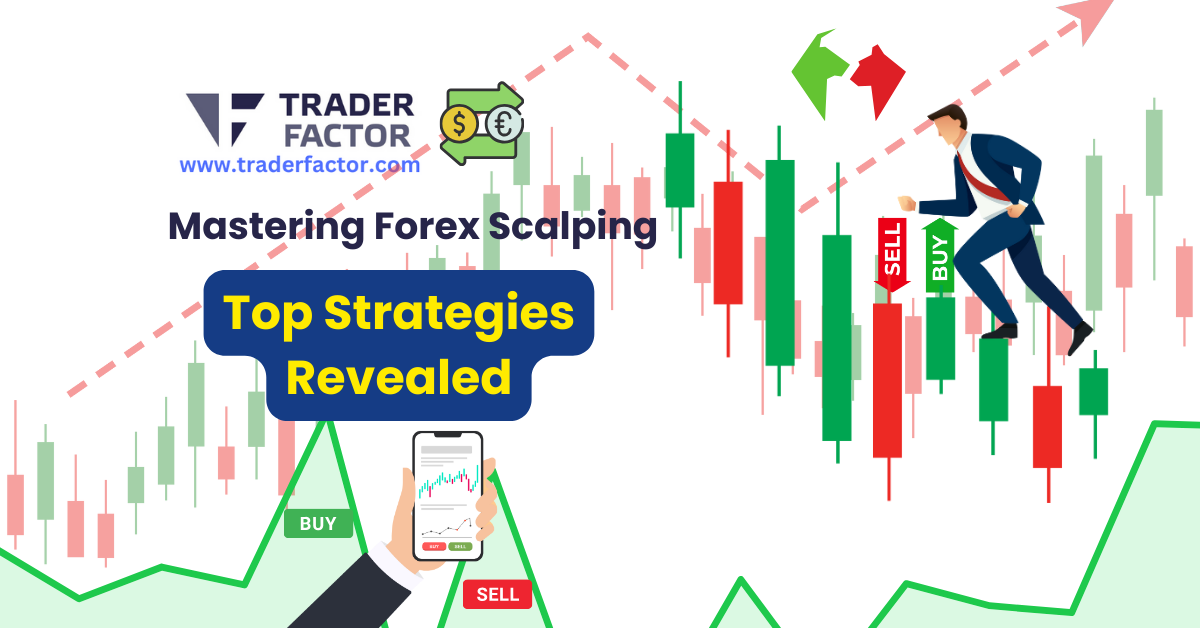Just by chance, you’ve stumbled upon one of the most thrilling and challenging aspects of Forex trading – scalping. This strategy, focusing on small, quick profits from minor market movements, is not for the faint of heart. It requires swift decision-making, constant market monitoring, and an uncanny ability to let go of losses. Now, you’re probably wondering, how can you master this high-speed trading style and what are the top strategies successful scalpers use? Well, let’s satisfy that curiosity and embark on this fast-paced adventure together.
Table of Contents
ToggleKey Takeaways
- Forex scalping is a trading method that aims to make small profits in a short amount of time by taking advantage of minor price changes.
- Scalping requires constant analysis, quick decision-making, and the ability to think quickly and predict market movements.
- Scalping is not suitable for everyone, and some traders may perform better with longer timeframes.
- The best time frames for scalping are between 1 and 15 minutes, and volatile currency pairs with low spreads are ideal for this strategy.

Understanding Forex Scalping
Diving into the world of Forex scalping, you’ll find it’s a unique trading approach that focuses on making numerous small trades to accumulate significant profits over time. It’s a swift game of quick decisions and constant market monitoring. But how does it stack up against other trading approaches like day trading and swing trading?
In the battle of scalping vs. day trading, you’ll find that while day traders make a few trades per day, scalpers make many more, often within minutes. Meanwhile, in the contest of scalping vs. swing trading, scalpers take advantage of smaller, short-term price changes, unlike swing traders who hold positions for days or weeks, aiming for larger price swings.
There are various scalping techniques and indicators used, such as moving averages, stochastic oscillators, and Bollinger Bands. But remember, risk management in scalping is crucial to protect your capital.
The psychological challenges of scalping are also significant. You’ll need to be disciplined, patient, and able to handle stress well. So, are you cut out for the fast-paced world of Forex scalping?

Suitability and Tips for Scalping
While weighing up the intricacies and challenges of Forex scalping, it’s crucial to consider whether this high-speed trading approach aligns with your trading style and skills. Scalping is not suited to everyone, and it demands a unique set of skills and mindset.
Your scalping psychology plays a pivotal role. You need to immerse yourself in market analysis, make swift decisions, and maintain composure even during stressful situations.
In terms of scalping risk management, you must be ready to take losses as they’re part of the game. Learning to accept small losses and move on is a key aspect of being a successful scalper.
Scalping indicators are your tools to identify potential entry and exit points. These could range from moving averages to stochastic oscillators, and your choice should align with your trading strategy.
Lastly, scalping time management is vital. You need to be able to dedicate specific hours to monitor the market and execute trades. Remember:
- Master scalping psychology to make swift decisions
- Implement robust scalping risk management strategies
- Utilize effective scalping indicators for precise entry and exit points
- Manage your time effectively to ensure you’re present at peak trading hours
Keep these tips in mind to master the art of scalping.

Time Frames for Successful Scalping
Choosing the right time frame is crucial when you’re scalping, as it can significantly impact your trading performance. The appropriate time frame will depend on your time availability and your strategy’s technical indicators. Typically, scalpers operate within the 1-minute to 15-minute time frames. The shorter the time frame, the quicker the trade, and the smaller the profit targets.
A crucial aspect to consider is the market’s volatility within your chosen time frame. High volatility provides more trading opportunities, but also increases risk. Therefore, a solid risk management strategy is paramount when you’re trading in highly volatile periods.
When utilizing technical indicators, be sure that they’re optimized for your chosen time frame. Some indicators work better in longer time frames and can give false signals in shorter ones. Always test your strategy and its indicators within your chosen time frame to ensure they’re compatible.

Choosing Currency Pairs for Scalping
Now that you’ve got a grasp on the importance of time frames in scalping, let’s shift focus to another vital aspect – selecting the right currency pairs for your scalping strategy. This may seem daunting, but with the right approach, you can master this crucial task.
Consider these factors when choosing currency pairs: * Market Volatility: Scalping in volatile markets can offer more opportunities. Look for currency pairs with high volatility. * Trading Volume: Pairs with high trading volume often provide the liquidity necessary for scalping. * Spreads: Scalping involves frequent trades, so low spread currency pairs can keep costs down. * Currency Correlations: Understanding how pairs move in relation to each other can help identify potential trades.
Scalping vs swing trading involves different approaches. Whereas swing trading involves holding positions for longer periods, scalping focuses on short-term trades. Using multiple indicators can enhance your decision-making process, but remember, effective risk management in scalping is paramount due to the high frequency of trades. Interestingly, scalping strategies for cryptocurrencies follow the same principles, but with unique considerations like market volatility and liquidity.

The 1 Minute Scalping Strategy
Diving into the 1 Minute Scalping Strategy, it’s crucial to understand this approach revolves around making numerous quick trades to take advantage of minor price movements. Much like any trading strategy, it has its pros and cons. While it allows for rapid profits and doesn’t tie up your investments for long periods, it demands constant attention and can be stressful.
A key tool in this strategy is the stochastic oscillator. Scalping with the stochastic oscillator involves identifying overbought and oversold conditions to predict future price movements. This tool can provide you with quick entry and exit points.
Another method is scalping with moving averages. This involves plotting different periods on your chart and entering a trade when they cross over. Meanwhile, scalping with the Parabolic SAR indicator and RSI is another popular technique. The Parabolic SAR helps identify potential stop and reversal points, while the RSI indicates whether the market is overbought or oversold.

Frequently Asked Questions
What Are the Potential Risks Involved in Forex Scalping?
In forex scalping, you’ll face risks like market volatility and scalping drawbacks. Your scalping psychology plays a crucial role, influencing decision-making. Effective risk management is vital, but even then, scalping challenges can lead to losses.
How Does Leverage Work in Forex Scalping and What Should Traders Be Cautious About?
In forex scalping, you’re using leverage to multiply your trades. But beware, misuse can lead to margin calls. Calculate leverage correctly and practice risk management to avoid the dangers of high leverage.
Can Forex Scalping Be Automated and if So, What Are the Key Considerations?
Yes, forex scalping can be automated. Consider automated scalping advantages like speed and accuracy, select reliable scalping software, understand algorithmic trading impact, backtest scalping strategies and optimize your scalping automation.
What Role Does a Broker Play in Forex Scalping and How to Choose a Suitable One?
Your broker plays a crucial role in forex scalping. Consider their scalping regulations, platform efficiency, and policies. Evaluate spreads and commissions, as they impact your profits. Broker selection is key to successful scalping.
Are There Any Specific Economic Indicators or Events That Scalpers Should Pay Close Attention To?
You should closely watch the Economic Calendar, Central Bank decisions, inflation rates, and employment data. These indicators significantly impact currency pair selection in Forex scalping, influencing your potential profits and losses.

Conclusion
You’ve now taken a deep dive into the world of Forex scalping. With knowledge about its suitability, time frames, currency pair selection, and the 1-minute strategy, you’re well-equipped to start. Remember, scalping is fast-paced and thrilling, but it requires quick decision-making and risk tolerance. So, gear up, practice, and be ready to embrace minor losses. With patience and persistence, you’ll soon master the art of Forex scalping. Happy trading!
















